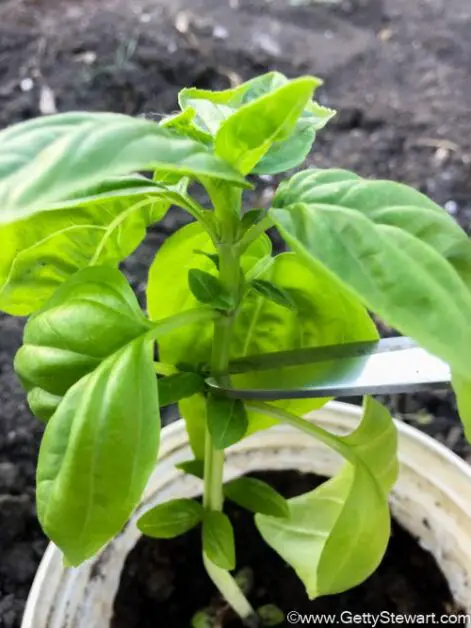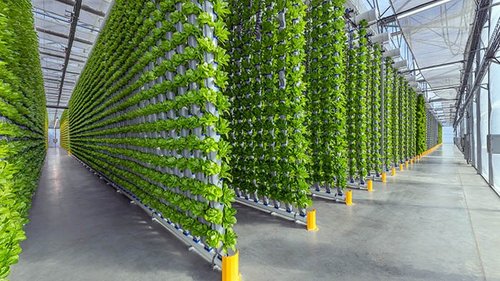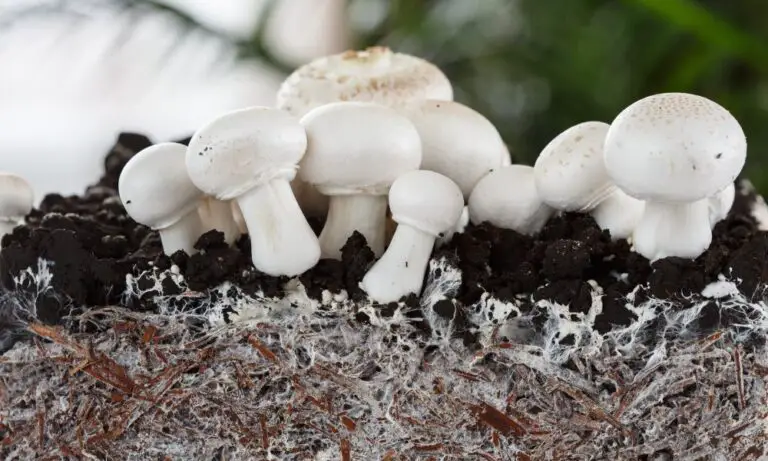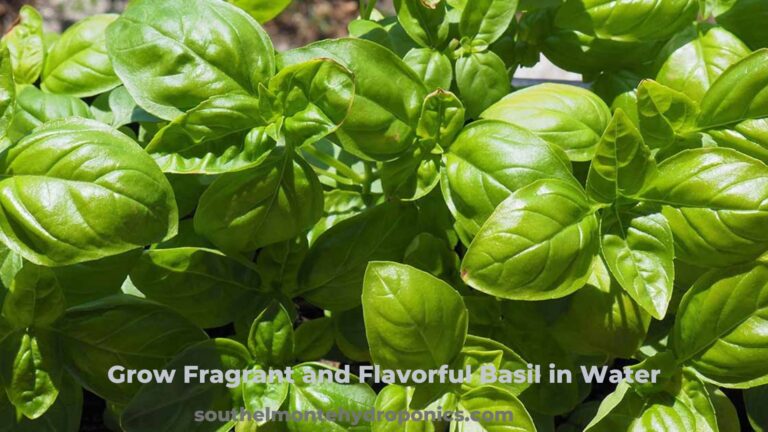No Sunlight? No Problem! 10 Low Light Vegetables You Can Grow Indoors with Hydroponics
Table of Contents
Understanding the Benefits of Indoor Hydroponic Gardening

Indoor hydroponic gardening offers numerous benefits for gardening enthusiasts, allowing them to grow fresh and healthy vegetables year-round, regardless of the outdoor conditions. One of the key advantages of this method is the ability to control the growing environment, providing optimal conditions for plant growth and development. By eliminating soil and using a nutrient-rich water solution, hydroponic systems deliver essential nutrients directly to the plants’ roots, promoting faster and more efficient growth.
Another benefit of indoor hydroponic gardening is its space-saving nature. Traditional soil-based gardens require a significant amount of garden space, limiting the potential for growing vegetables in urban or limited areas. Indoor hydroponic systems, on the other hand, can be set up in small spaces, such as balconies, basements, or even on kitchen countertops. This makes it an ideal solution for individuals living in apartments or those with limited outdoor areas. Additionally, the controlled environment of hydroponic systems minimizes the risk of pests, diseases, and weeds, reducing the need for chemical pesticides and herbicides.
Exploring the Potential of Low Light Vegetables for Indoor Cultivation
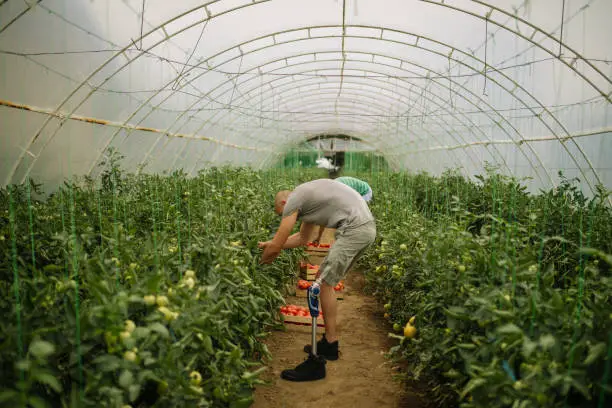
Low light conditions can pose challenges for indoor gardening enthusiasts, but with the right selection of low light vegetables, cultivating a thriving indoor hydroponic garden is not only possible but also rewarding. Low light vegetables are specifically bred or adapted to tolerate reduced sunlight, making them ideal choices for indoor cultivation. These vegetables have the ability to photosynthesize and produce energy in low light conditions, allowing them to flourish even without direct sunlight.
One example of a low light vegetable is spinach. Spinach is known for its ability to thrive in shaded areas and can handle low light conditions well. It is rich in vitamins A and C, iron, and calcium, making it a nutritious addition to any indoor garden. Collard greens are another excellent option for low light conditions. These leafy greens can withstand limited sunlight and are packed with vitamins, minerals, and fiber. Additionally, Swiss chard is well-suited for indoor cultivation in low light environments. Its colorful stems and large, tender leaves can add a vibrant touch to any indoor garden, while providing a good source of vitamins and minerals.
By selecting the right low light vegetables, gardening enthusiasts can create a thriving indoor hydroponic garden that offers a continuous supply of fresh, nutrient-rich produce. With careful attention to lighting, nutrients, and environmental conditions, it is possible to achieve successful cultivation of low light vegetables and enjoy the benefits of a sustainable indoor garden.
The Science Behind Hydroponics: How It Works Without Sunlight
Hydroponics is an innovative method of cultivation that enables plants to grow without the need for soil. Traditionally, plants rely on sunlight as a primary source of energy through the process of photosynthesis. However, in indoor hydroponic systems, where sunlight may be limited, artificial lighting takes center stage.
The key to successfully growing plants without sunlight lies in the use of specialized lamps that emit specific wavelengths of light. These lamps, typically LED or fluorescent, are designed to mimic the spectrum of natural sunlight, providing plants with the energy they need to carry out photosynthesis. By carefully adjusting the intensity and duration of artificial lighting, indoor gardeners can create optimal growing conditions for a wide variety of low light vegetables. Additionally, certain advanced lighting systems even allow for customization, enabling growers to fine-tune the light spectrum to best suit the needs of their specific crops.
Selecting the Right Vegetables for Low Light Conditions
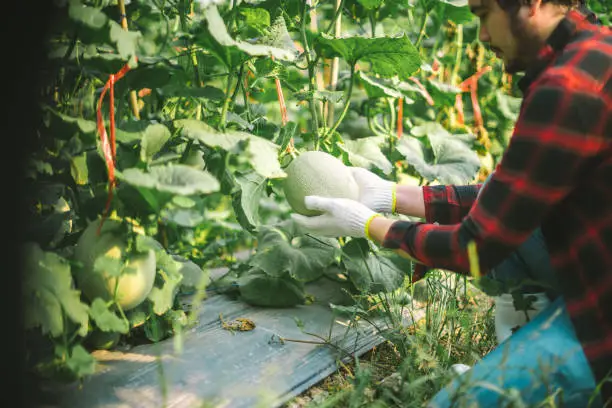
To successfully grow vegetables in low light conditions, it is essential to select the right varieties that are well-suited for these environments. While many vegetables thrive under direct sunlight, certain plants adapt better to low light settings, making them ideal choices for indoor hydroponic gardens. These vegetables have evolved to survive in shady areas, where they have developed the ability to utilize light more efficiently. By selecting these low light varieties, you can ensure optimal growth and a bountiful harvest.
One excellent option for low light conditions is leafy greens such as spinach, lettuce, and kale. These vegetables are packed with essential nutrients and are known for their ability to grow well in partially shaded areas. Additionally, they have relatively short growth cycles, making them perfect for indoor gardening. Other suitable choices include herbs like parsley, cilantro, and mint, which can thrive with reduced light levels. These culinary herbs not only add flavor to your dishes but also offer numerous health benefits. Offering a diverse range of flavors and textures, these leafy greens and herbs will provide a satisfying harvest, even in low light conditions.
Best Practices for Setting Up Your Indoor Hydroponic System
Setting up an indoor hydroponic system requires careful planning and attention to detail to ensure optimal growth and productivity. Here are a few best practices to consider when setting up your own indoor hydroponic system.
First and foremost, selecting the right location for your indoor garden is crucial. Choose a space with adequate lighting and temperature control. While artificial light sources can be used to supplement natural light, it’s important to provide enough brightness for your plants to thrive. Additionally, maintaining a steady temperature between 65-75°F (18-24°C) and a relative humidity of 50-70% is essential for the health of your plants.
Next, selecting the appropriate type of hydroponic system is key. There are various systems available, including nutrient film technique (NFT), deep water culture (DWC), and aeroponics, each with its own advantages and considerations. Consider factors such as space availability, water and nutrient requirements, and the specific needs of the vegetables you plan to cultivate.
Once you have determined the location and type of system, ensure proper installation and setup. This includes correctly positioning the grow lights, setting up an efficient water and nutrient delivery system, and providing adequate ventilation for air circulation. Regular maintenance, such as cleaning and sterilizing your system to prevent the buildup of algae and pests, is also essential to ensure the health of your plants.
By following these best practices, you can set up a successful and productive indoor hydroponic system. Remember to monitor your plants closely, make adjustments as needed, and enjoy the rewarding experience of growing your own fresh vegetables year-round.
Here’s a detailed guide outlining the best practices for setting up your indoor hydroponic system:
| Best Practices for Setting Up Your Indoor Hydroponic System | Guidelines |
|---|---|
| 1. Choose an Appropriate Location | – Select a well-ventilated area with access to natural or artificial light sources. |
| – Ensure the location is stable and free from temperature fluctuations or drafts. | |
| 2. Select the Right Hydroponic System | – Choose a hydroponic system suitable for your space, budget, and growing goals (e.g., Deep Water Culture, Nutrient Film Technique, Ebb and Flow). |
| – Consider factors such as scalability, maintenance requirements, and ease of use. | |
| 3. Set Up Adequate Lighting | – Install grow lights with the appropriate spectrum and intensity for your plants’ growth stage. |
| – Ensure even light distribution across all plants and adjust light height as needed to prevent burning or stretching. | |
| 4. Install Proper Ventilation | – Use exhaust fans and intake vents to maintain optimal airflow and prevent heat buildup in the grow space. |
| – Position fans strategically to create gentle airflow around plants and prevent stagnant air pockets. | |
| 5. Choose the Right Growing Medium | – Select a growing medium suitable for your hydroponic system and plant species (e.g., Rockwool, perlite, coco coir). |
| – Ensure the growing medium provides adequate support and drainage for plant roots. | |
| 6. Monitor and Control Nutrient Solution | – Use a pH meter and EC meter to monitor and adjust nutrient solution pH and electrical conductivity (EC) levels regularly. |
| – Maintain nutrient solution temperature within the optimal range to prevent nutrient imbalances and root rot. | |
| 7. Implement a Timely Maintenance Schedule | – Regularly inspect and clean hydroponic components such as pumps, reservoirs, and tubing to prevent clogs and contamination. |
| – Replace nutrient solution at least once every 1-2 weeks to prevent nutrient deficiencies and algae growth. | |
| 8. Practice Good Hygiene and Sanitation | – Wash hands thoroughly before handling plants or hydroponic equipment to prevent the spread of pests and diseases. |
| – Disinfect tools and surfaces regularly to minimize the risk of contamination. | |
| 9. Train and Prune Plants for Optimal Growth | – Train plants to grow vertically using trellises or stakes to maximize light exposure and airflow. |
| – Prune plants regularly to remove dead or diseased foliage and promote healthy growth. | |
| 10. Implement a Pest and Disease Management Plan | – Monitor plants regularly for signs of pests and diseases, such as yellowing leaves or unusual spots. |
| – Use natural predators, organic pesticides, or fungicides to control pest and disease outbreaks effectively. |
Providing Adequate Lighting for Optimal Growth
Indoor hydroponic gardening requires careful consideration of lighting to ensure optimal growth and development of plants. Light is a critical factor for plants as it fuels the process of photosynthesis, enabling them to convert light energy into chemical energy for growth. In low light conditions, it becomes essential to provide supplementary lighting to compensate for the lack of natural sunlight.
One common lighting option for indoor hydroponics is LED (Light-Emitting Diodes) lights. These lights are known for their energy efficiency, long lifespan, and ability to emit specific wavelengths that promote plant growth. Research has shown that using LED lights can enhance photosynthetic efficiency, improve crop yields, and reduce energy consumption compared to traditional lighting sources. By selecting LED lights with the appropriate light spectrum for different stages of plant growth, indoor gardeners can provide the ideal lighting conditions necessary for plants to thrive.
Another consideration when providing adequate lighting is the duration of light exposure. Just like outdoor plants, indoor hydroponic plants also require a certain number of hours of light per day to perform photosynthesis effectively. Most plants require around 14-16 hours of light per day during the vegetative stage, while flowering plants may require slightly shorter light periods. It is essential to establish a consistent and reliable lighting schedule to ensure the plants receive the necessary light duration for optimal growth.
The proper selection and management of lighting in indoor hydroponic gardens are crucial for achieving successful plant cultivation. By utilizing LED lights and ensuring the appropriate duration of light exposure, gardening enthusiasts can create an ideal environment for their low light vegetables to flourish. Stay tuned for more insights on other essential aspects of indoor hydroponic gardening!
Watering and Nutrient Requirements for Low Light Vegetables
Low light vegetables, being cultivated indoors, have unique watering and nutrient requirements compared to their outdoor counterparts. Since these plants do not receive natural sunlight, their growth and development rely heavily on the provision of adequate water and essential nutrients. In hydroponic systems, where plants grow without soil, it is crucial to ensure that the water is properly balanced with essential nutrients to promote optimal growth.
When it comes to watering low light vegetables, it is important to maintain a consistent moisture level without overwatering. Overwatering can lead to root rot and other problems, so it is advisable to let the top layer of the growing medium dry out slightly before watering again. This ensures that the roots receive sufficient oxygen and prevents the accumulation of excess moisture.
In terms of nutrient requirements, low light vegetables primarily need macronutrients such as nitrogen (N), phosphorus (P), and potassium (K), as well as micronutrients like iron (Fe), magnesium (Mg), and calcium (Ca). These nutrients can be provided through specially formulated hydroponic nutrient solutions or organic fertilizers suitable for hydroponic gardening. Regular testing of the nutrient solution is essential to adjust the levels as needed and ensure that the plants receive the appropriate balance of nutrients for healthy growth. By carefully monitoring and adjusting the water and nutrient levels, gardeners can help their low light vegetables thrive in an indoor hydroponic environment.
Managing Temperature and Humidity in Your Indoor Garden
Maintaining optimal temperature and humidity levels is crucial for the success of your indoor garden. By carefully managing these environmental factors, you can ensure healthy growth and maximize the productivity of your low light vegetables.
Temperature control is essential in creating a favorable environment for your plants. Most low light vegetables thrive in temperatures between 65°F and 75°F (18°C to 24°C). It is important to avoid extreme temperature fluctuations as they can stress the plants and hinder their growth. To maintain a consistent temperature, it is recommended to use a thermostat or a digital temperature controller to monitor and regulate the temperature in your indoor garden.
Humidity levels also play a significant role in the overall health and development of your plants. While relative humidity can vary depending on the specific vegetable species, a range between 40% and 60% is generally suitable. Higher humidity levels can increase the risk of fungal diseases, while low humidity can lead to water stress and hinder nutrient absorption. To control humidity, you can use a hygrometer to monitor levels in your grow space and make adjustments as needed. Adding a humidifier or dehumidifier can help maintain optimal humidity levels for your plants.
Successfully managing temperature and humidity in your indoor garden requires careful monitoring and adjustments. By providing the ideal conditions, you are creating a conducive environment for your low light vegetables to thrive and produce a bountiful harvest.
• Maintaining optimal temperature and humidity levels is crucial for the success of your indoor garden.
• Temperature control is essential in creating a favorable environment for your plants.
• Most low light vegetables thrive in temperatures between 65°F and 75°F (18°C to 24°C).
• Avoid extreme temperature fluctuations as they can stress the plants and hinder their growth.
• Use a thermostat or a digital temperature controller to monitor and regulate the temperature in your indoor garden.
• Humidity levels also play a significant role in the overall health and development of your plants.
• A range between 40% and 60% relative humidity is generally suitable for most vegetable species.
• Higher humidity levels can increase the risk of fungal diseases, while low humidity can lead to water stress and hinder nutrient absorption.
• Use a hygrometer to monitor humidity levels in your grow space and make adjustments as needed.
• Adding a humidifier or dehumidifier can help maintain optimal humidity levels for your plants.
• Successfully managing temperature and humidity requires careful monitoring and adjustments.
Troubleshooting Common Issues in Low Light Hydroponic Gardening
Common issues can arise when growing low light vegetables in a hydroponic system. One challenge is ensuring that plants receive adequate light for photosynthesis. Low light conditions can hinder their growth and development. To troubleshoot this issue, it is important to assess the lighting setup in your indoor garden. Consider using alternative light sources such as LED grow lights specifically designed for low light plants. These lights emit the optimal wavelengths of light necessary for plant growth, helping to compensate for the lack of natural sunlight.
Another common issue in low light hydroponic gardening is maintaining the appropriate temperature and humidity levels. Low light conditions can often lead to cooler temperatures, and if not balanced properly, this can impact plant health. To address this, it is crucial to monitor and control the temperature and humidity within your indoor garden. Insulate the area if needed, use fans or air conditioning to regulate temperature, and consider employing a humidifier or dehumidifier to maintain optimal humidity levels for your particular plants.
Troubleshooting these common issues in low light hydroponic gardening requires a careful analysis of the environment and understanding the specific needs of your plants. By taking proactive measures to address these challenges, you can ensure the success of your indoor garden and enjoy a thriving harvest of low light vegetables.
Tips for Maximizing Yield and Harvesting Your Indoor Vegetables
To maximize yield and ensure a successful harvest from your indoor vegetable garden, there are several key tips to keep in mind. Firstly, it’s important to closely monitor and adjust the growing conditions to meet the specific needs of each vegetable variety. Different plants have different requirements for light, temperature, humidity, and nutrition, so tailoring these factors accordingly will help optimize growth and yield.
Another important tip is to pay close attention to water and nutrient management. In hydroponic systems, the plants rely on a precise balance of water and nutrients for healthy growth. Regularly check and maintain the nutrient solution levels, ensuring the proper pH and nutrient concentrations for each stage of plant growth. Regularly monitor and adjust water levels to avoid overwatering or underwatering, which can negatively impact yields.
Additionally, pruning and proper spacing of plants is crucial for maximizing yield. Overcrowding can lead to competition for light and nutrients, resulting in stunted growth and reduced productivity. Regularly remove any dead, diseased, or damaged plant material to prevent the spread of pests and diseases, and promote overall plant health. Pruning can also promote better air circulation and minimize the risk of fungal infections.
Furthermore, providing adequate support for climbing or vining plants is essential to prevent damage and maximize productivity. Trellises, stakes, or other support structures can help keep plants upright and prevent pests or diseases from gaining easy access to the foliage.
Lastly, timely and careful harvesting is key to ensuring optimum quality and continued production. Harvesting too early or too late can result in suboptimal flavors, textures, and nutritional value. Follow specific recommendations for each vegetable type, paying attention to the optimal maturity stage for harvesting. Use sharp and clean tools to minimize damage to the plant and maximize its regrowth potential.
By implementing these tips, you can maximize the yield and harvest of your indoor vegetables, enjoying the fruits of your labor while cultivating a successful and productive hydroponic garden.
Incorporating Sustainable Practices in Indoor Hydroponic Gardening
As gardening practices continue to evolve, incorporating sustainable methods into indoor hydroponic gardening is becoming increasingly important. By adopting environmentally friendly practices, gardeners can reduce their ecological footprint and create a more sustainable future. One of the key ways to achieve this is by using organic and sustainable fertilizers in hydroponic systems.
Traditional hydroponic systems often rely on synthetic fertilizers, which can be harmful to the environment and potentially contaminate water sources. However, there are now organic alternatives available that provide the necessary nutrients without the negative effects. These organic fertilizers are derived from natural materials, such as compost, seaweed, and worm castings, making them safe for both plants and the surrounding ecosystem.
In addition to selecting sustainable fertilizers, it is also important to consider the overall energy consumption of the indoor hydroponic system. By utilizing energy-efficient lighting options, such as LED bulbs, gardeners can significantly reduce their energy usage while still providing the necessary light for plant growth. These LED lights consume less electricity, have a longer lifespan, and emit less heat compared to traditional lighting options, making them a more sustainable and cost-effective choice. By implementing these sustainable practices, gardeners can create an indoor hydroponic garden that not only produces healthy and vibrant plants but also minimizes its impact on the environment.
Exploring Alternative Light Sources for Low Light Vegetable Cultivation
As indoor gardening continues to grow in popularity, finding alternative light sources for low light vegetable cultivation becomes a crucial aspect of optimizing plant growth and harvest. Traditional methods of using natural sunlight or artificial grow lights can be expensive and may not provide the ideal light intensity and spectrum for low light vegetables. Fortunately, advancements in technology have opened up a world of possibilities for gardeners seeking alternative light sources.
One such alternative is LED lighting, which has gained considerable recognition and acceptance in the horticulture community. LED lights offer energy efficiency, longevity, and the ability to provide specific light wavelengths tailored to the requirements of different plant species. Low light vegetables like lettuce, spinach, and kale can benefit from LED lights that emit wavelengths in the blue and red spectrum, promoting photosynthesis and enhancing plant growth.
Another alternative light source for low light vegetable cultivation is fluorescent lighting. Compact fluorescent lamps (CFLs) and high-output fluorescent lights have proven to be effective in providing sufficient light for plants. These lights are often used in combination with reflectors to maximize light distribution. Fluorescent lights are relatively affordable and generate less heat compared to traditional incandescent bulbs, making them an ideal choice for indoor gardens where temperature management is crucial.
As the demand for indoor gardening solutions increases, researchers and manufacturers continue to explore innovative technologies to improve light sources for low light vegetable cultivation. From LED to fluorescent lighting, these alternative options offer unique benefits that can assist gardeners in achieving optimum growth and bountiful harvests. Stay tuned as advancements in lighting technology pave the way for even more exciting opportunities in the world of indoor hydroponic gardening.
Understanding the Role of pH Levels in Hydroponic Gardening
pH levels play a crucial role in hydroponic gardening as it directly affects the nutrient availability to plants. When it comes to hydroponics, maintaining the right pH level is essential for optimal plant growth and nutrient uptake.
In a hydroponic system, water serves as the medium through which plants absorb nutrients. The pH scale measures the acidity or alkalinity of a solution, with values ranging from 0 to 14. A pH level of 7 is considered neutral, while values below 7 indicate acidity and values above 7 indicate alkalinity.
The pH level of a hydroponic system is typically maintained between 5.5 and 6.5, slightly acidic to neutral. This range allows for the optimal absorption of nutrients by the plants. When the pH level deviates outside this range, nutrient availability can become limited, leading to nutrient deficiencies or toxicities. Adjusting the pH level, either by adding acid or base solutions, ensures that plants can access the necessary nutrients for healthy growth. By closely monitoring and regulating the pH level, hydroponic gardeners can create an optimal environment for plants to thrive and maximize their potential yield.
Exploring Different Hydroponic Systems for Indoor Vegetable Cultivation
When it comes to indoor vegetable cultivation using hydroponic systems, there are several options that gardeners can explore. Each system has its own advantages and considerations, depending on the specific requirements and preferences of the gardener.
One popular hydroponic system for indoor vegetable cultivation is the Deep Water Culture (DWC) system. In this system, plants are suspended in containers with their roots submerged in a nutrient-rich water solution. A pump keeps the water circulating, ensuring that the plants have constant access to the necessary nutrients. The DWC system is relatively easy to set up and maintain, making it a great option for beginners in hydroponics. It also allows for the cultivation of a wide range of vegetable crops, including lettuce, spinach, and herbs.
Another hydroponic system that is commonly used for indoor vegetable cultivation is the Nutrient Film Technique (NFT) system. In this system, a thin film of nutrient-rich water flows over the roots of the plants, providing them with the necessary nutrients and oxygen. The excess water is then collected and recirculated back into the system. The NFT system is known for its efficient use of water and nutrients, making it a sustainable choice for indoor gardening. It is particularly well-suited for growing leafy greens and small herbs, as the shallow channels in which the plants are placed provide ample space for their roots to thrive.
These are just two examples of the different hydroponic systems that can be used for indoor vegetable cultivation. Each system has its own unique characteristics and benefits. By understanding the various options available, gardeners can choose the system that best fits their needs and successfully cultivate a thriving indoor vegetable garden.
Showcasing Success Stories: Indoor Hydroponic Gardens with Low Light Vegetables
Indoor hydroponic gardening has gained significant popularity in recent years, particularly for growing low light vegetables. Gardening enthusiasts have embraced this innovative technique as a solution to the challenge of limited sunlight. Through a carefully controlled environment and the use of artificial lighting, success stories of thriving indoor hydroponic gardens with low light vegetables have emerged.
One remarkable success story comes from a garden in an urban apartment. With the absence of direct sunlight, the hydroponic system allowed the owner to cultivate a variety of low light vegetables, such as leafy greens and herbs. The use of LED grow lights provided the necessary spectrum and intensity of light for optimal growth. As a result, the garden flourished, yielding a bountiful harvest throughout the year.
Another inspiring success story comes from a greenhouse facility that specializes in growing low light vegetables through hydroponics. By adjusting the lighting, temperature, and nutrient levels, the facility achieved remarkable growth rates and exceptional yields. With careful monitoring and attention to detail, they have created an ideal environment for the plants to thrive, even in the absence of natural sunlight.
These success stories demonstrate the remarkable potential of indoor hydroponic gardens for cultivating low light vegetables. By providing the essential environmental conditions and utilizing artificial lighting, gardeners can overcome the limitations of natural sunlight and enjoy a flourishing garden throughout the year. With careful planning and implementation, anyone can embark on their own journey of success in indoor hydroponic gardening with low light vegetables.
Can any vegetable be grown in an indoor hydroponic garden with low light conditions?
While many vegetables can be grown in low light conditions, some vegetables are better suited for indoor hydroponic gardens. It is important to select vegetables that have adapted to low light conditions or have been bred specifically for indoor cultivation.
How can I provide adequate lighting for optimal growth in my indoor hydroponic garden?
To provide adequate lighting for optimal growth, you can use grow lights such as LED or fluorescent lights. These lights can mimic the spectrum of sunlight and provide the necessary light intensity for plant growth.
What are the watering and nutrient requirements for low light vegetables in a hydroponic system?
The watering and nutrient requirements for low light vegetables in a hydroponic system may vary depending on the specific vegetable. Generally, it is important to monitor the pH and nutrient levels of the water regularly and adjust accordingly. Watering should be done carefully to avoid overwatering or underwatering the plants.
How can I manage temperature and humidity in my indoor hydroponic garden?
To manage temperature and humidity in your indoor hydroponic garden, you can use fans or ventilation systems to regulate airflow and prevent temperature and humidity extremes. It is important to maintain optimal temperature and humidity levels for the specific vegetables you are growing.
What are some common issues that may arise in low light hydroponic gardening?
Some common issues that may arise in low light hydroponic gardening include nutrient deficiencies, pest infestations, and plant diseases. Regular monitoring, proper nutrient management, and maintaining a clean environment can help prevent and address these issues.
How can I maximize yield and harvest my indoor vegetables effectively?
To maximize yield and harvest your indoor vegetables effectively, it is important to maintain proper plant spacing, provide adequate lighting and nutrients, and regularly monitor and address any plant health issues. Harvesting should be done at the appropriate time to ensure optimum flavor and quality.
What are some sustainable practices that can be incorporated into indoor hydroponic gardening?
Some sustainable practices that can be incorporated into indoor hydroponic gardening include using organic nutrients, recycling water, implementing energy-efficient lighting systems, and reducing waste through composting or reusing growing media.
Are there alternative light sources that can be used for low light vegetable cultivation?
Yes, there are alternative light sources that can be used for low light vegetable cultivation, such as incandescent lights, high-pressure sodium lights, or even natural light from windows. However, it is important to ensure that the light source provides the necessary light intensity and spectrum for plant growth.
What role do pH levels play in hydroponic gardening?
pH levels play a crucial role in hydroponic gardening as they affect nutrient availability to plants. It is important to monitor and adjust the pH levels of the nutrient solution to ensure optimal nutrient uptake by the plants.
What are the different hydroponic systems that can be used for indoor vegetable cultivation?
There are various hydroponic systems that can be used for indoor vegetable cultivation, including nutrient film technique (NFT), deep water culture (DWC), and ebb and flow systems. Each system has its own advantages and considerations, and the choice depends on the specific requirements of the vegetables being grown.


